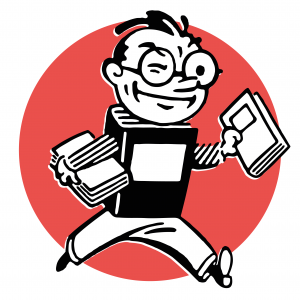Like the recording artists of old, Big Pharma is on the production treadmill.
Stockbroking analysts are like rock stars. It’s not only the late nights they put in, it’s in their production cycle.
The rock model is straightforward: time is spent in the studio recording an album, which is released and promoted (pre-Covid anyway) by extensive UK, US and European tours. After a brief respite, as brief as the record label can make it, the artist is back in the studio recording the next album, and so the cycle – or treadmill – starts again.
Similarly, an investment analyst writes a report, publishes, markets it across the UK, US and Europe before returning to base and, after a brief respite, as brief as research management can make it, returns to their ‘studio’ to compose the next. All creative industries – and a good analyst should be as imaginative as a rock star, possibly more so than some members of the rhythm section – have the same pattern of existence: a period of inspirational hibernation followed by marketing and exposure, the cycle repeated as often and for as long as there is an audience for the work.
The pharmaceutical industry, whose products are not unknown in the world of rock, has a similar rhythm. Years of lab-bench R&D undertaken by highly creative scientists are followed by the release and global marketing of, hopefully, a blockbuster that will pay for research into the drugs that follow, cover the cost of cul-de-sac R&D and plump the cushions in the C-suite. In Big Pharma, big music and big stockbroking, the margins gouged from the few successful releases pay for myriad failures and ensure the wheel keeps turning.
The problem for the pharmaceutical industry is that, Covid-19 vaccines aside, the average time and cost of finding, testing, producing and bringing to market a new drug has ballooned to 14 years and $2.6bn, more even than a late-period Guns N’ Roses album. Only one in 10,000 drugs makes it through pre-clinical trials and, according to Deloitte, the average return on pharma R&D has sunk to a painful 1.9%, comfortably below the cost of capital. The problem is compounded by genomics and the evolution of more targeted biologic drugs with better outcomes, but smaller market opportunities. Although these can be developed more quickly, the regulatory requirements remain as onerous and expensive as ever, undermining the economics of development at the same time as they satisfy Eroom’s Law. What is the solution?
“As patriotism is the last refuge of the scoundrel, so M&A is for the cost or revenue-pressed CEO”
As patriotism is the last refuge of the scoundrel, so M&A is for the cost or revenue-pressed CEO. In pharma, Bristol Myers Squibb has acquired Celgene, AbbVie swallowed Allergan, Takeda merged with Shire and GlaxoSmithKline gobbled Tesaro. As compound names like Bristol Myers Squibb and GlaxoSmithKline bear witness, we have been here before.
The difference this time, and as usual it is both a problem and solution, is technology. The use of big data is increasing. Vas Narasimhan, CEO of Novartis, describes it as “a data science company”, which may be news to those who considered it a drug company. He observed: “The tech companies…realised that the core asset for them is the data mining of all that experience.” Many expect data to augment drug production. Although it is not certain anyone has submitted a supplementary application using RWD/RWE, data could extend drug protection by generating further periods of marketing exclusivity or allowing new patents to be filed.
Big data is not the only technology at play. Exscientia, an Oxford-based biotech company spun out from the University of Dundee, recently announced that in a joint venture with Sumitomo Dainippon Pharma, it had produced one of the first AI-created drug compounds, DSP 1181, for OCD. AI concertinaed the design and development of molecules, with a suite of algorithms selecting the best chemical structure. According to its CEO, Andrew Hopkins, a molecular biophysicist, “The AI can learn faster than conventional approaches, so we had to make and test only 350 compounds, a fifth of the normal number, which is record-breaking productivity.”
With the (considerable) caveat we do not yet know the structure for DSP-1181, meaning it is impossible to vouch for its absolute novelty or whether it will ultimately succeed, the introduction of technology into drug development is good news. As AI becomes integrated into the process, Big Pharma will be able to undertake the ‘R’ in R&D at lower cost and in the event a smaller company has the right algorithm, a bigger player can take a stake or buy the firm. But, notwithstanding issues of overpaying for early stage drugs, is this as positive as it looks or have we been here before?
We return to rock. In the mid-1990s an oligopoly of major record labels was impregnable, protected by the moat of copyright, awash with cash, much of which was blown on fast cars and ‘flowers’, happy to acquire successful independents at no more than a roll of the dice. Everyone was buying overpriced CDs, often albums they already owned on vinyl – at one stage in the late 1980s, a CD factory in Germany was working 24 hours a day pressing Pink Floyd’s Dark Side of the Moon, most of which were bought by middle-aged executives reimagining their younger selves. As a result, the value of back catalogues and publishing revenues soared. Music was sold for movies, TV dramas and advertisers for ever-increasing sums. On the supply side, artists were tied to one-sided contracts and, as the FD of EMI once put it, “People are always looking for partners, and wherever they are, music will be playing.”
“In short, after years of plenty, competition for the oligopoly arrived”
We all know what happened next: the internet, trailing streaming, piracy and teenagers bypassing the labels and uploading music from their bedrooms. Napster died, but Spotify was born. Gradually the latter became the gatekeeper, its playlists making and breaking artists in the way the record labels used to. In short, after years of plenty, competition for the oligopoly arrived, both in the supply of new music, which increased exponentially, and in demand, which consolidated around platforms such as Spotify that the labels could not control.
Is there an analogy with the relatively small number of firms that comprise the oligopoly of Big Pharma? It too is an industry that has appeared impregnable, its ‘hits’ protected by the moat of patent, awash with cash from blockbusters, much of which is blown on R&D, capable of acquiring independents or interesting early stage compounds. Many hospitals have no choice but to buy high-priced drugs, from the front or back catalogue, and are often tied to one-sided contracts. Echoing ‘The Suit’ at EMI, the FD of a Big Pharma company hasn’t – but could – put it, “People always want to be healthy and at some stage of their lives drugs will have to be present.”
On supply, technology has arrived in the form of AI and big data. Exscientia, among countless others fired by VC capital, is the equivalent of the schoolboy uploading tracks from his bedroom or the mushrooming number of small labels competing for airtime. These lower ‘R’ costs benefit Big Pharma too, but they undermine its monopoly and mean competition must increase. M&A, invariably expensive, will not Hoover up all the good ideas. For the first time, like music in the early years of the millennium, the oligopoly faces supply side competition from myriad ‘bedroom’ sources.
The flip side of the analogy is less obvious. At present there is no Spotify consolidating demand and driving down prices for hospital purchasers; even if there was, pricing power for specific drugs would remain with the pharma companies. Meanwhile the cost of the ‘D’ in R&D remains huge, with all compounds needing to navigate phase one, two and three trials and satisfy supervisory bodies – something that will remain beyond the realm of possibility for smaller companies, even given the speed to market precedents set by the coronavirus vaccine. Most small companies will still require external capital or a joint venture for commercialisation, both at the regulatory and marketing stages.
Unlike for music, social media is not enough. This capital could come from Big Pharma, but it might not. It might even come from big tech. Amazon is moving into healthcare.
The narrative of technology is one of disruption, increased competition and the oligopolistic giants of the analogue age being replaced by nimbler tech-savvy competitors. It happened in the music industry. In pharmaceuticals too, the coder is about to be crowned king.








